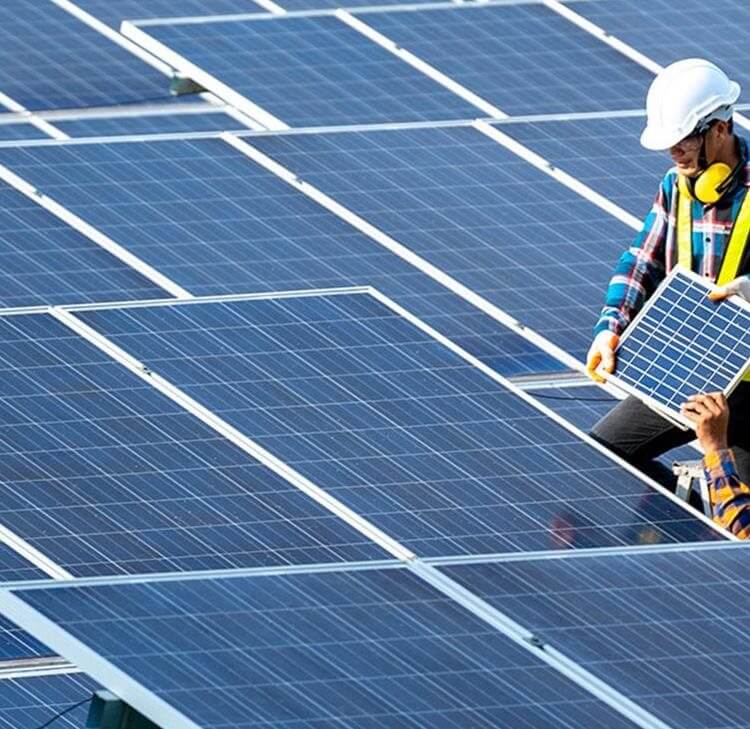Most higher education institutions (HEIs) will already have introduced the benefits of renewable energy to its campus or estates and if not, will likely be considering how to do so.
The benefits are obvious; from cost savings to appealing to students and potential students who are often, quite rightly, champions of sustainability and simply doing the right thing for our environment. Uswitch have even started publishing Green University league tables from November 2022.
In this article we focus on one type of renewable energy: solar. We advise on how it may be best implemented within an HEI’s estate and detail what assistance is available from the government.
Government energy policy and Net Zero
In February 2023 it was announced that the Department for Business, Energy and Industrial Strategy (BEIS) is to be disbanded, with four new departments created in its place. One of these new departments- the new Department for Energy Security and Net Zero - will focus specifically on driving the decarbonising of all sectors of the UK economy to meet the UK’s net zero target by 2050.
Many commentators won’t be surprised that this new department has been created. Within the last 12 months there has been an increase in extreme weather events linked to climate change (most notably UK temperatures exceeding 40 degrees centigrade for the first time) and, of course, the energy crisis as a result of the war in Eastern Europe.
The Department for Energy Security and Net Zero will seek to address events such as these through policies and proposals and we will be following developments closely.
It can be tempting when a departmental change such as this occurs to wait and see what new policy is announced. For higher education institutions, however, there are options available that can be taken advantage of now to move towards net zero and to mitigate exposure to the energy crisis and rising energy costs.
Energy options for HEIs to consider
An increasing number of universities are taking advantage of one particular option, namely installing solar panels. This is due to the availability of space at most universities (most commonly unused roof space) and the relative ease and speed of installation that ensures minimal disruption to students and university operations.
For those universities yet to install solar panels it can be daunting, but it needn’t be. Solar photovoltaic projects (“Solar PVs”) can be broken down into milestones that are broadly captured within the following five categories:
- Development and planning
- Establishing financing
- Construction
- Commissioning and operation
- Decommissioning
Commonly, universities face difficulties at milestone number 2: they struggle to secure adequate financing. It is possible we will see new subsidies and support schemes introduced by the Department for Energy Security and Net Zero, but so far no announcement has signalled such a move.
Once funding is obtained, the construction milestone (3) is arguably the most significant. Universities will need to enter various legal agreements to ensure a successful installation that completes on time and budget. It is common to enter into a bespoke ‘Engineering, Procurement and Construction’ (“EPCs”) contract to ensure the needs of the university are met.
Engineering, procurement and construction (EPCs)
Bespoke EPCs tend to be used because, whereas in a standard design and build contract the contractor guarantees that a certain project will be completed (and will be structurally sound), an EPC contractor does not guarantee the operational output of its construction (e.g. for solar projects the contractor cannot guarantee the weather required for the solar panels to operate).
Also, given that solar panels enable universities to generate their own energy, there is the possibility of transmitting any unused energy to the National Grid in return for payment. How the revenue is derived and divided between the parties involved is agreed within a separate agreement such as a Connection Agreement or Power Purchase Agreement (“PPA”).
Commissioning and operation
At milestone 4 (commissioning and operation), technical maintenance will be required. It is recommended that a separate Operation & Maintenance (“O&M”) contract is entered into to ensure the specialist maintenance works are completed regularly and competently. It is common for existing standard forms (e.g., the JCT Measured Term Contract) to be entered into and they can be amended accordingly.
In conclusion…
As a starting point to generating renewable energy, as opposed to merely sourcing energy generated elsewhere from a renewable source, solar panels present an excellent opportunity for universities.
This technology is becoming more accessible every year and developing at a rapid pace. Getting to grips with what is required at each project milestone now will stand universities in good stead for larger projects with more complex installations and technology at a later date, while also helping to boost green credentials and minimise exposure to the risk of rising energy costs.











































